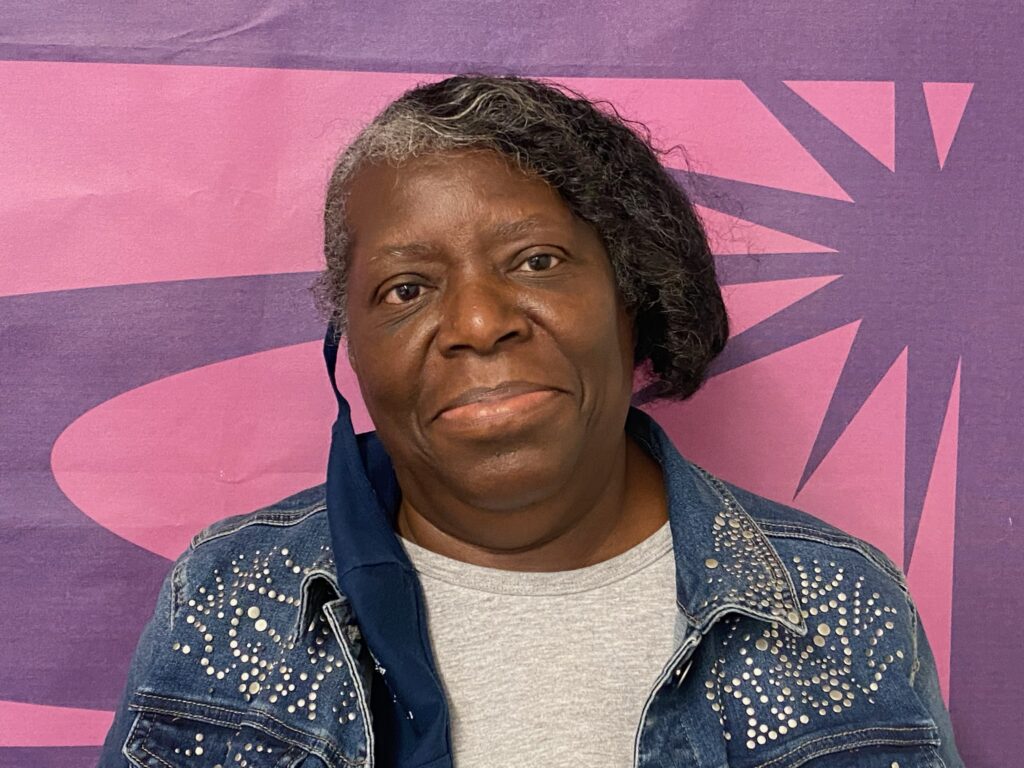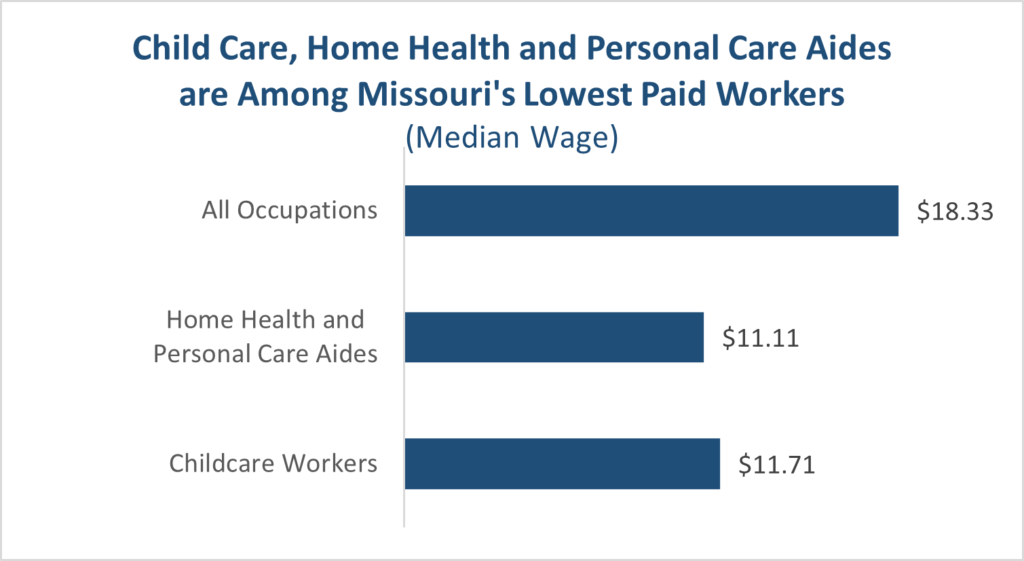A Spotlight on Care Workers
Care workers represent one of the fastest growing occupations in Missouri and play a fundamental role in families’ lives and in the economy. Yet they are among the lowest paid workers in our state and often have few benefits beyond their pay.
Changing Demographics Will Increase Shortage of Care Workers in Missouri
Care workers play a fundamental role in families’ lives and in the economy, allowing Missourians to participate in the workforce while knowing that their loved ones are safe and cared for in home, childcare, or other settings. Unfortunately, like most of the country, Missouri is facing a significant shortage in the elder care workforce as the baby boom population retires. Compounding the problem for working parents is the shortage of childcare workers, leaving many in the ‘sandwich generation’ facing difficult caregiving choices for both their parents and their children.
Childcare Workers and Home Health and Personal Care Aides are already among the state’s top 20 occupations with the most job openings, including total annual openings of 3,560 Childcare Workers and 12,432 Home Health and Personal Care Aides, and this demand is expected to increase over
the decade.
Low wages and few benefits may make it hard for these fields to attract more workers. Care work is often mentally and physically demanding work, requiring multiple skills, and high levels of trust and professionalism. The low pay of this undervalued work often leads to high turnover and staffing shortages, which can compromise the care and service children and adults receive.
Care Workers Among the Lowest Paid Workers & Disproportionately Female, Black, and Hispanic
Missouri has more than 11,300 Childcare Workers, and almost 71,000 Home Health and Personal Care Aides who provide care to the elderly and individuals with disabilities. These essential workers have median annual wages of $24,360 and $23,110, respectively—barely above the $23,030
poverty threshold for a family of three. Adding to their financial insecurity, care workers are also less likely to receive nonwage benefits, such as health insurance and retirement benefits, compared to the overall workforce. And like other low-paid workers, they are less likely to have access to paid
leave compared to higher wage earners.
Though statewide demographic data is limited, nationally childcare and home health workers are disproportionately female, Black, and Hispanic, compared to the overall workforce.
- While almost half of all workers are women, nearly 90% of home healthcare workers and 94% of childcare workers are women.
- About 1 of every 4 home healthcare workers are Black women, and 1 in every 5 are Hispanic women. But among all workers, Black and Hispanic women are each less than 1 in every 13 workers.
- Among childcare workers, the rates of Black and Hispanic women are more than twice their rates among all workers.
Not only have the efforts of these members of the workforce historically been undervalued, but they continue to be discriminated against in the job market and often encounter multiple barriers and fewer job opportunities. All are factors that leave them vulnerable to jobs that lack worker protections and adequate compensation.
Childcare and Home Health and Personal Care Aide occupations were impacted during the COVID-19 pandemic. Home Health and Personal Care Aide employment has returned to near 2019 pre-pandemic levels, but the state had about 2,000 fewer childcare workers in 2021 compared to 2019.xxvii This has broader implications for the state’s economy because parents’ access to childcare is correlated with increased labor force participation and ability to earn a living, particularly for mothers.

“In the profession of early education or childcare, wages for employees are so low that most of the employees find themselves in the same emotional and mental state as the struggling families we serve. Overworked, underpaid, and invisible to the officials that say they support us, Childcare facility employees work paycheck to paycheck and still need public assistance or have to choose to pay a bill or put food on the table for their own families, all while making sure the children in their classroom get everything they need with a smile on the teachers’ faces. It’s sometimes hard to make sure your classroom kids get fed while you secretly wonder if your own children will eat that night.”
Samantha Cross, Director, Little Precious Angels Childcare Center

“Home health workers have been undervalued and denied the wages, benefits, and respect that we deserve for too long. Through this pandemic, we stepped up to deliver unmatched care to vulnerable Missourians in the comfort of their own homes. We work long hours, take on physical and emotional labor, and provide the one-on-one care and attention that keeps our clients healthy and safe. We’re asked to take on more and more, working longer hours without proper support or a living wage. It’s beyond time our leaders step up and stop neglecting essential workers and the Missourians we care for.”
Ms. Elinor Simmons, Healthcare Worker, SEIU Healthcare Missouri
Next: Jobs & Unemployment
Page 1: Introduction
Page 2: Wages
Page 3: A Spotlight on Care Workers
Page 4: Jobs & Unemployment
Page 5: Conclusion




